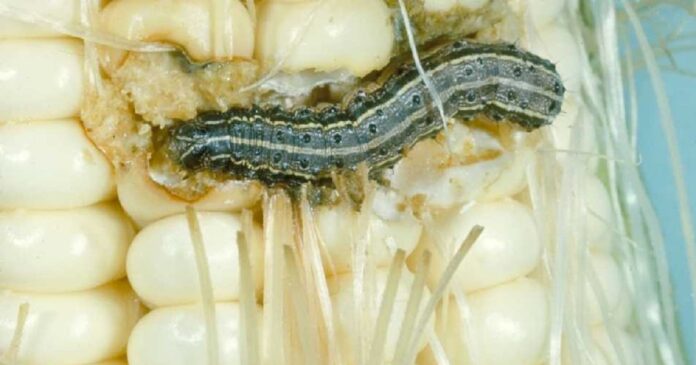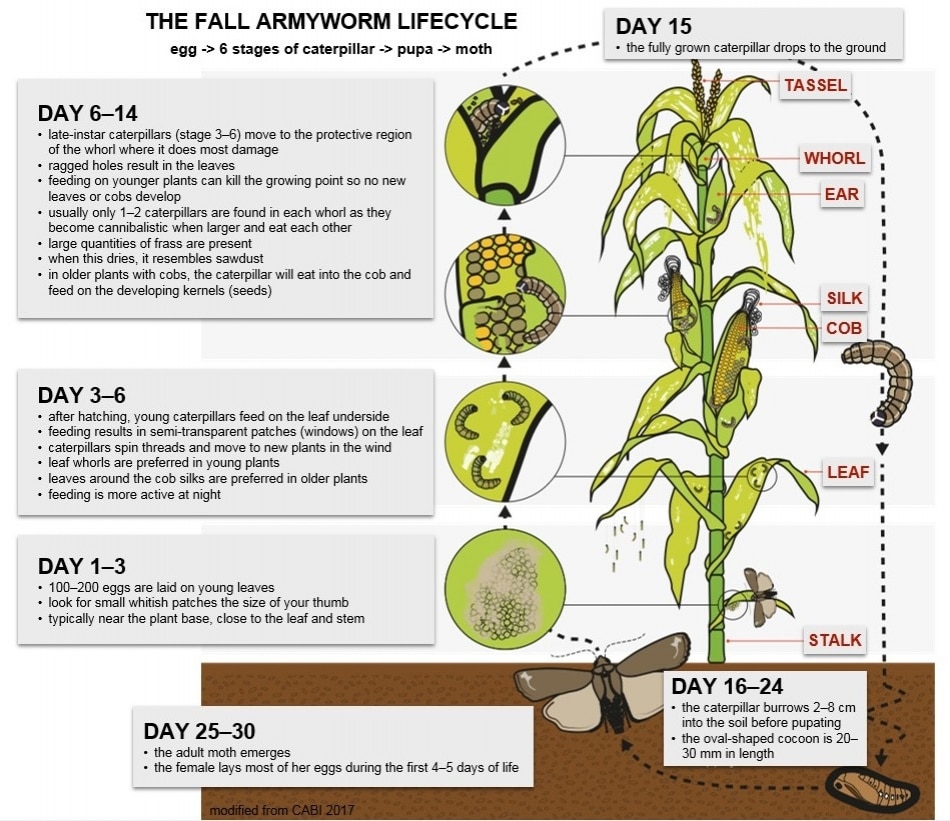Today, we bring you the life cycle of fall armyworm and the stages when they are very destructive to crops.
The Fall armyworm, Spodoptera frugiperda, is a major invasive pest in Africa. It has a voracious appetite and feeds on more than 80 plant species, including maize, rice, sorghum and sugarcane. Another feature which makes it an incredibly successful invasive species is its ability to spread and reproduce quickly.
Day 1-3
100-200 eggs are generally laid on the underside of the leaves typically near the base of the plant, close to the junction of the leaf and the stem. These are covered in protective scales rubbed off from the moth’s abdomen after laying. When populations are high, the eggs may be laid higher up the plants or on nearby vegetation.
Day 3-6
Growth stages 1-3: After hatching, the young caterpillars feed superficially, usually on the undersides of leaves. Feeding results in semitransparent patches, or “windows”, on the leaves. Young caterpillars can spin silken threads which catch the wind and transport the caterpillars to a new plant. The leaf whorl is preferred in young plants, whereas the leaves around the cob silks are attractive in older plants. If the plant has already developed cobs then the caterpillar will eat its way through the protective leaf bracts into the side of the cob where it begins to feed on the developing kernels. Feeding is more active during the night.
Read also: What are Africa’s Greatest Challenges in Agriculture?
Day 6-14
Growth stages 4-6: By stages 4-6, the fall armyworm will have reached the protective region of the whorl, where it does the most damage, resulting in ragged holes in the leaves. Feeding on young plants can kill the growing point, resulting in no new leaves or cobs. Often only 1 or 2 caterpillars found in each whorl, as they become cannibalistic when larger and will eat each other to reduce competition for food. Large quantities of frass (caterpillar poo), which resembles sawdust, will be present.
Read also: Illustration on How to Scout and Identify Fall Armyworm in Maize Farms
Day 14-23
After about 14 days the fully grown caterpillar will drop to the ground. The caterpillar will then burrow 2-8 cm into the soil before pupating. The loose silk oval shape cocoon is 20-30 mm in length. If the soil is too hard then the caterpillar will cover itself in leaf debris before pupating. After about 8-9 days the adult moth emerges to restart the cycle.
Source: The Life Cycle of Fall Armyworm (Plantwise)



